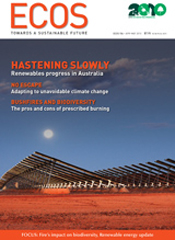
|
Published:
State of the climate snapshot
CSIRO and the Bureau of Meteorology have produced a snapshot of the state of the climate to update Australians about how their climate has changed and what it means.
Changes observed include:
-
highly variable rainfall across the country, with substantial increases in rainfall in northern and central parts of Australia, as well as significant decreases across much of southern and eastern Australia;
-
about half of the observed reduction in winter rainfall in south-west Western Australia can be explained by higher greenhouse gas levels;
-
rapidly rising sea levels from 1993 to 2009, with levels around Australia rising, between 1.5 cm and 3 cm per decade in Australia’s south and east and between 7 cm and 9 cm in the country’s north;
-
since 1960 the mean temperature in Australia has increased by about 0.7°C. The long-term trend in temperature is clear, but there is still substantial year-to-year variability of about plus/minus 0.5°C; and
-
some areas have experienced a warming of 1.5 to 2°C over the last 50 years. While warming has occurred in all seasons, the strongest warming has occurred in spring (about 0.9°C) and the weakest in summer (about 0.4°C).
The snapshot is sourced from peer reviewed data on temperature, rainfall, sea level, ocean acidification, and carbon dioxide and methane levels in the atmosphere.
More details can be found online at www.csiro.au/resources/State-of-the-Climate-Snapshot--ci_pageNo-2.html.



